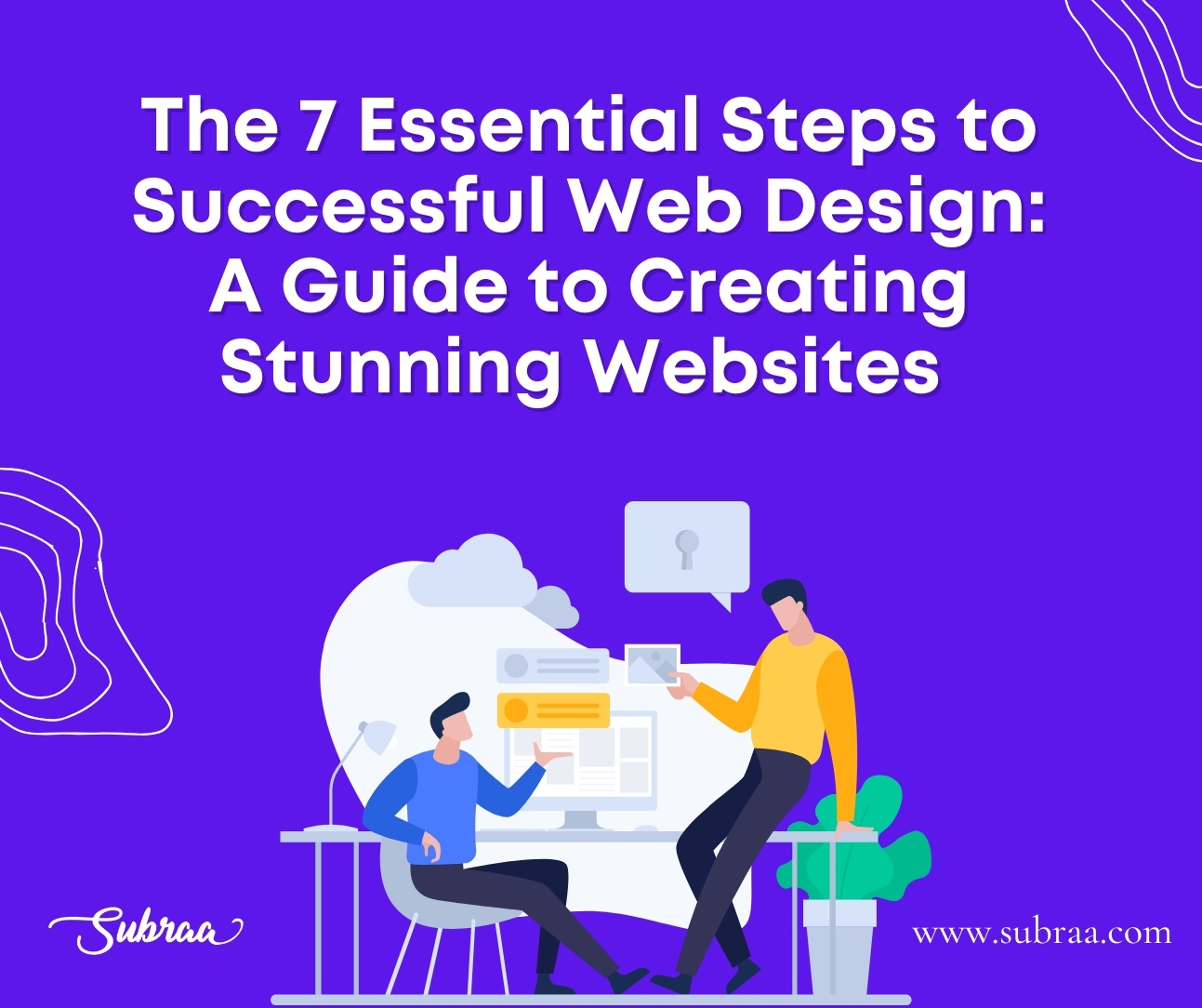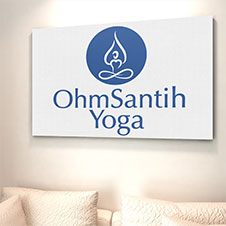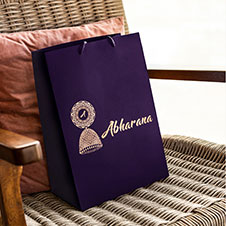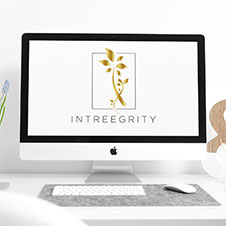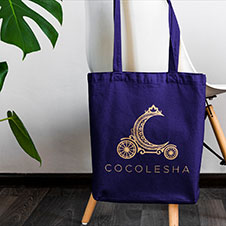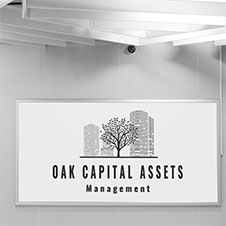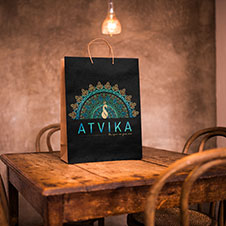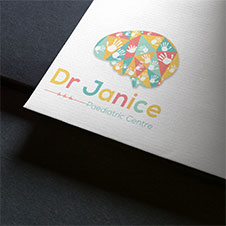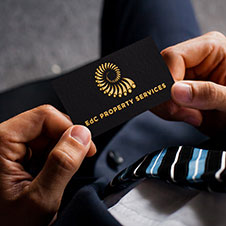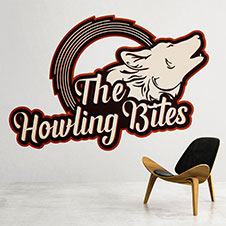Your website isn’t an accessory; it’s the core of your online presence. Small entrepreneurs, business owners and marketers investing in a professionally developed website can be a game changer. With so many pricing options available, an issue is often asked about the cost of a website design in Singapore.
The Ultimate Guide to Business Cards: Elevating Your Professional Brand
Business Card Design: In the fast-paced digital era, where online networking and virtual communication dominate, it may be tempting to perceive business cards as outdated. However, these definite and personalized marketing tools continue to hold significant value in establishing and promoting your professional brand. Some may argue that they are an outdated networking method. In contrast, others believe they still have immense value in making a favorable impression on potential connections.
In this all-encompassing guide, we will learn about the importance of business cards and other invaluable insights on crafting a design that captures attention, leaves a lasting impression, and sheds light on how they can unlock opportunities for networking and branding.
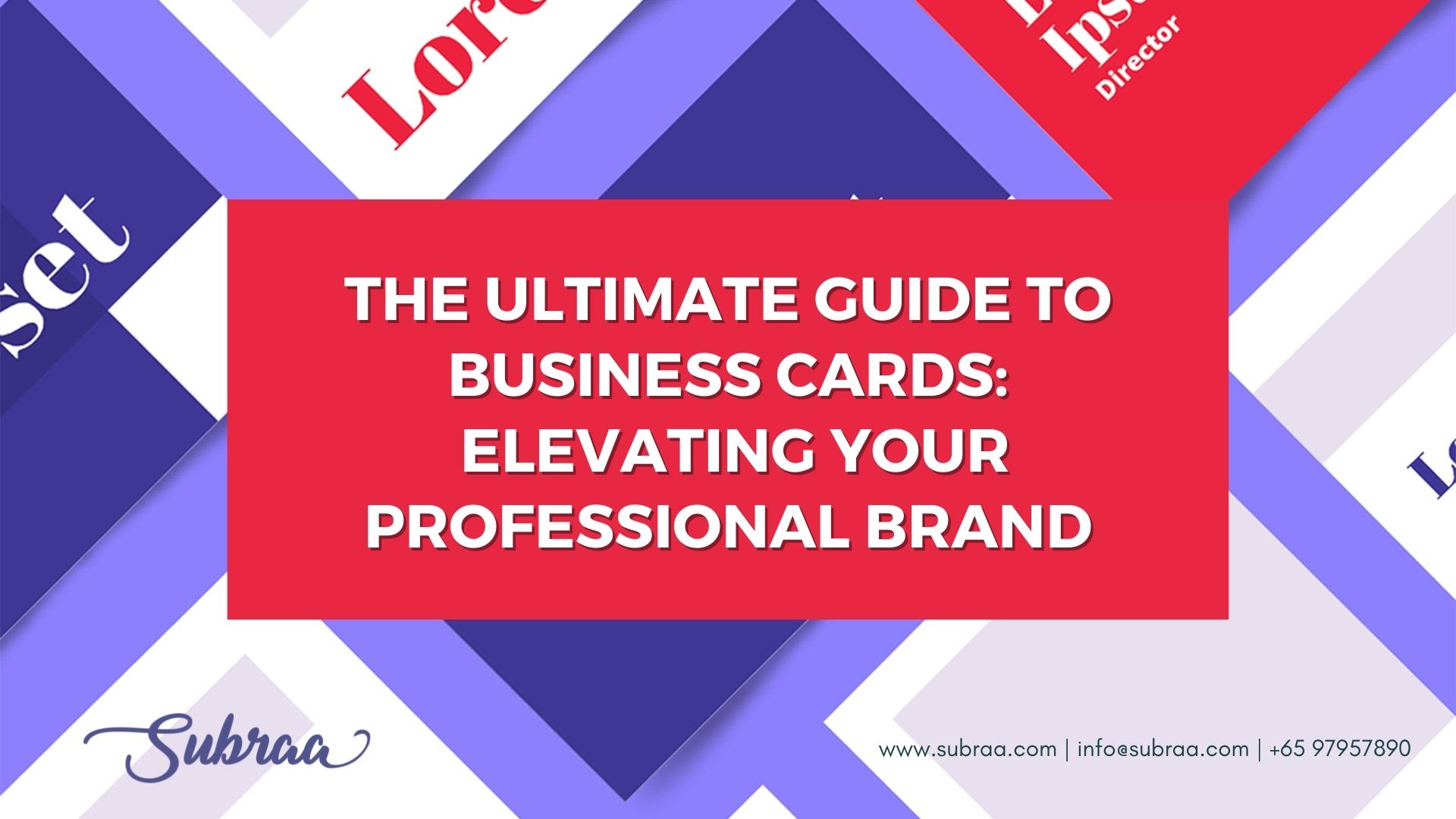
Evolution of Business Cards
Business cards have a rich history, dating back to 15th-century China, where they were used as calling cards. Over time, they evolved from simple name card design to sophisticated tools for networking and brand representation. Today, business cards are more than just a piece of paper; they are powerful statements that reflect a person’s or organization’s identity.
Why Business Cards Matter
Few may question the relevance of business cards. However, they remain a strong asset for several reasons. Firstly, business cards offer a definite and personal connection in an increasingly digital world. They serve as physical reminders of interactions, making it easier for individuals to recall and follow up with contacts. Furthermore, business cards can leave a lasting impression on recipients, differentiating one’s brand from competitors.
Designing an Impressive Business Card
A well-designed business card serves as a professional tool and a tangible representation of your brand identity. Pay attention to key elements such as layout, typography, colors, and imagery to create a visually appealing and impactful design. Additionally, incorporating essential contact information and utilizing high-quality materials can further enhance your business card’s overall impression and longevity.
By carefully considering these elements, you can ensure that your business card leaves a lasting and positive impact on potential clients and business associates. Let’s explore the key factors to consider in detail during the design process.
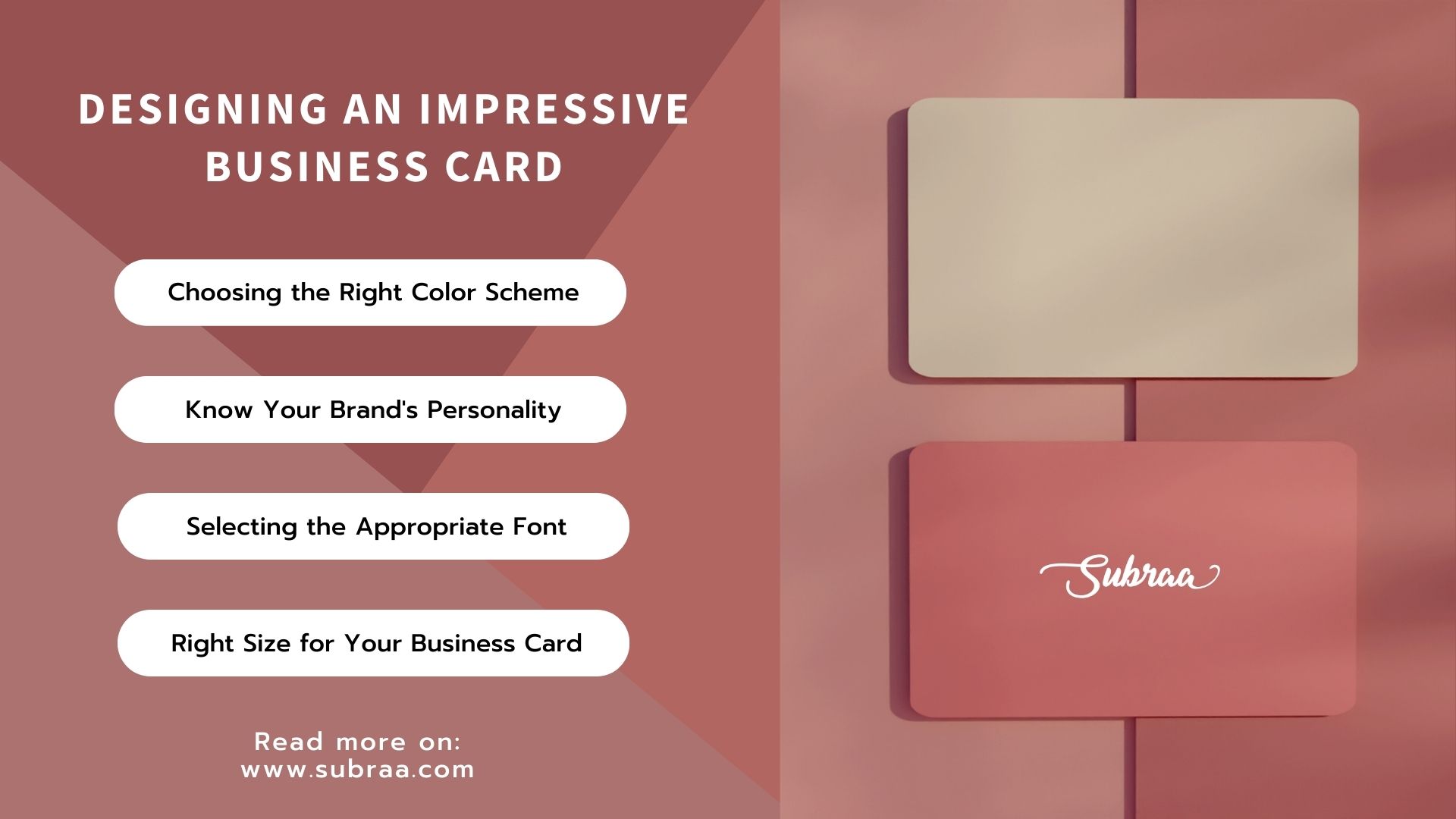
Choosing the Right Color Scheme for Your Business Card
Colors play a vital role in defining the effectiveness of a business card. Colors can stimulate emotions and associations, making it imperative to carefully select hues that align with your brand and target audience. We will explore the significance of color in business cards and provide valuable insights on choosing the right color scheme to make a lasting impression.
The Impact of Colors on Business Cards
Colors profoundly influence human psychology and can significantly influence how individuals perceive a brand. When it comes to business cards, selecting a suitable color scheme can improve their visual appeal and effectiveness. Let’s see more into the significance of colors and how they can convey different messages:
Vibrant Colors for Creative Industries
Vibrant colors can be an excellent choice for businesses in creative industries such as design, fashion, or art. These bold and energetic hues grab attention and communicate a sense of creativity, innovation, and enthusiasm. Bright shades like blue, red, or sunny yellow can make your business card stand out and leave a lasting impression on potential clients.
Calm Tones for Professionalism and Reliability
If your brand revolves around professionalism and reliability, opting for more subdued tones is advisable. colors like navy blue, charcoal grey, or forest green exude a sense of trustworthiness and competence. These sophisticated and understated shades create a lasting impression of stability and dependability, which can be particularly beneficial for industries such as finance, law, or consulting.
Tips for Selecting an Effective Color Scheme
Now that we comprehend the impact of colors on business cards, let’s explore some tips to help you choose an effective colour scheme that resonates with your brand and target audience:
Know Your Brand’s Personality
Before finalizing a colour scheme, it’s crucial to have a deep understanding of your brand’s personality. Reflect on your brand values, mission, and target audience. Are you aiming for a youthful and lively vibe or a more professional and traditional image? Understanding these aspects will guide you in selecting the right colors that align with your brand’s identity.
Consider Your Target Audience
Your potential audience plays a crucial role in color selection. Different demographics and psychographics respond to colors in various ways. Analyze your target audience to identify their preferences and associations with specific colors. This knowledge will enable you to create a business card that resonates with your potential clients and effectively communicates your message.
Keep it Cohesive
While it’s essential to choose colors that stand out and grab attention, it’s equally important to maintain cohesion and consistency with your overall brand image. Ensure that the color scheme of your business card aligns with your logo, website, and other marketing materials. Consistency across various touchpoints fosters brand recognition and reinforces your professional identity.
Test Different Color Combinations
Don’t hesitate to experiment with different colour combinations to find the one that works best for your business card. Try contrasting colors to create visual interest and ensure readability. Test your designs with colleagues, friends, or focus groups to gather feedback and make informed decisions based on their responses. A well-tested colour scheme can significantly contribute to the effectiveness of your business card.
Consider Printing Limitations
Lastly, when selecting a colour scheme, consider the printing limitations and techniques available to you. Some colors may appear differently when printed compared to their appearance on a digital screen. Consult with a professional printer to understand the possibilities and limitations of your chosen colour palette to ensure
Selecting the Appropriate Font
Business cards are powerful marketing tools that leave a lasting impression on potential clients and partners. While the design and layout of a business card are crucial, font choice plays a vital role in capturing attention and conveying the right message. The font used on a business card contributes to its overall visual appeal and readability. Opt for clean and legible fonts that reflect the personality of your brand. Strike a balance between aesthetics and practicality to provide the information on your card that is easily accessible to recipients.
Importance of Font Selection
The font used on a business card contributes to its overall aesthetics and readability. It reflects the brand’s personality and influences how the recipient perceives the information presented. A well-chosen font can enhance brand recognition, establish professionalism, and create a sense of trust.
Factors to Consider
When selecting a font for your business card, several factors should be considered to ensure an optimal choice that aligns with your brand and target audience.
Legibility
Above all, the font should be legible. It should be easily readable, even at small sizes, to ensure that the recipient can effortlessly absorb contact details and essential information. Avoid overly elaborate or decorative fonts that sacrifice legibility for style.
Brand Consistency
Maintaining consistency across all branding materials is essential. The font chosen for the business card should align with the fonts used in other marketing collaterals such as the company logo, website, and promotional materials. This consistency reinforces brand recognition and establishes a cohesive visual identity.
Target Audience
Consider the preferences and expectations of your target audience. Different industries and demographics may respond better to specific font styles. For instance, a creative design agency may opt for a modern and trendy font, while a law firm might prefer a more traditional and formal typeface. Understanding your audience will guide you towards the most appropriate font choices.
Industry Relevance
The font selected should be relevant to your industry or profession. Certain fonts convey specific meanings or associations. For example, a sleek and minimalist font may suit a technology-focused business, while an elegant and sophisticated font may be more suitable for a luxury brand. Ensure that the font resonates with the nature and values of your business.
Serif Fonts
Serif fonts are characterized by small decorative strokes at the end of letterforms. They exude a sense of tradition, elegance, and formality. Serif fonts are often used in more traditional industries such as finance, law, or publishing.
Some popular serif fonts include Times New Roman, Georgia, and Baskerville. These fonts provide a classic and sophisticated look, making them suitable for business cards in professional settings.
Sans-Serif Fonts
In contrast to serif fonts, sans-serif fonts lack the decorative strokes at the end of letters. They offer a clean, modern, and minimalistic appearance, conveying simplicity and professionalism. Sans-serif fonts are commonly used in contemporary industries like technology, design, and fashion.
Examples of popular sans-serif fonts include Arial, Helvetica, and Calibri. These fonts are highly legible and can be an excellent choice for business cards where a clean and modern aesthetic is desired.
Script Fonts
Script fonts mimic handwriting and evoke a sense of elegance, creativity, and personalization. They are ideal for businesses that want to convey a unique and artistic touch. However, script fonts should be used sparingly and in appropriate contexts, as excessive use can hinder readability.
Some notable script fonts include Brush, Edwardian, and Lucida Calligraphy. A script font in a business card design can add a hint of refinement and personal charm.
Display Fonts
Display fonts are attention-grabbing, decorative, and often used for headings or logos. They are characterized by their unique and distinctive designs, making them ideal for businesses that seek to make a bold statement. However, they should be used sparingly to avoid overwhelming the overall design.
Notable display fonts include Impact, Bebas Neue, and Lobster. These fonts can add personality and creativity to your business card while maintaining readability.
Combining Fonts
To create visual interest and hierarchy in your business card design, you can combine different fonts. When combining fonts, consider the following aspects:
Contrast and Complement
Choose fonts that have contrasting characteristics to create a harmonious balance. For instance, pairing a serif font with a sans-serif font or a script font with a display font can create a visually appealing contrast. Ensure that the fonts complement each other and contribute to the overall design aesthetic.
Readability and Hierarchy
Maintain readability by selecting fonts with clear distinctions between letters and appropriate spacing. Establish a hierarchy by assigning different fonts to different elements on the business card, such as the name, contact information, and tagline. This hierarchy helps guide the reader’s attention and improves the overall readability of the card.
Best Practices for Font Selection
Here are some best practices to consider when selecting fonts for your business card:
Readability Test
Always test the chosen font at different sizes and ensure that it remains legible. Print a sample of the business card and verify that the font is easily readable both up close and at arm’s length.
Consistency across CollateralsMaintain consistency by using the same or similar fonts across all marketing materials. This consistency strengthens your brand identity and creates a cohesive visual experience for your audience.
Customization and Uniqueness
While selecting a font that aligns with your industry and target audience is essential, don’t be afraid to customize or modify fonts to create a unique look. This customization can be subtle, such as adjusting letter spacing or adding minor elaborations to add a personal touch to your business card.
Selecting the appropriate font for your business card is critical to a compelling design. The right font improves readability, reflects your brand’s personality, and creates a memorable impression. By considering factors such as legibility, brand consistency, target audience, and industry relevance, you can make informed decisions and create visually appealing business cards that leave a lasting impact.
Incorporating Engaging Visuals
Visual elements, such as logos and relevant graphics, can enhance the visual impact of your business card. A well-placed logo can strengthen brand recognition, while carefully chosen graphics can communicate the essence of your industry or profession. However, hitting a balance and avoiding cluttering the card with excessive visuals that may distract from the essential information is important.
Business Card Content: What to Include
The content of a business card should be straightforward yet complete. When designing a business card, it’s important to include essential information that allows recipients to contact and connect with you easily. Here are the key elements to include in your business card:
Essential Contact Information
Ensure that your business card includes essential contact information such as your name, phone number, email address, and physical address. This information allows recipients to reach out to you easily and effectively. Clearly state the name of your company or organization. This helps establish brand recognition and credibility. If applicable, include your social media handles.
Including a QR code on your business card can make accessing your website or other online resources easier for recipients. Ensure that the QR code is scannable and relevant to your business.
Logo and Branding Elements
Incorporate your company’s logo and branding elements to establish visual consistency and reinforce brand recognition. Consistent branding across all touchpoints creates a cohesive and proficient image.
Concise Job Title and Description
Include your job title or professional designation to clarify your role within the organization, which will help recipients understand your area of expertise.
Leave some empty space on your business card to maintain a clean and neat design. This helps improve readability and visual appeal. You can include relevant visual elements such as icons, graphics, or a small headshot, depending on your industry or personal preference.
Business Card Size: Making a Lasting Impression
The size of a business card should be considered. It is a key element in leaving a memorable impression and effectively representing your brand. By understanding the standard sizes, considering design aspects, and embracing technological improvements, you can create a business card that stands out from the competition.
The Significance of Business Card Size
The size of a business card affects its portability, readability, and visual impact. A well-designed and appropriately sized business card can convey professionalism, creativity, and attention to detail. Moreover, it helps establish a visual hierarchy, ensuring essential information stands out while maintaining a visually pleasing layout.
Standard Business Card Sizes
The most common business card size is 95mm X 55mm. This size balances compactness and ample space for essential information, making it widely recognized and accepted.
European Standard Size
The standard business card size is slightly different, measuring 3.346 inches by 2.165 inches (85mm x 55mm). Although the variation is minor, it is essential to consider these differences if you are conducting business internationally.
Other Common Sizes
Apart from the North American and European standards, various alternative sizes are available. These include square business card designs, oversized business card designs, mini business card designs, and foldable business card designs. Each size offers unique advantages depending on your business and design preferences.
Choosing the Right Size for Your Business Card
Selecting the right size for your business card depends on several factors. Consider your industry, target audience, and the amount of information you wish to include. A unique size might help you stand out if you are a creative professional. In contrast, a standard size is often preferred in more formal industries.
Design Considerations for Different Sizes
Designing a business card involves more than just selecting the size. The layout, typography, colours, and graphics should all align with your brand essence and reverberate with your target audience. Different sizes may require adjustments to maintain readability and visual balance.
Printing and Cutting Guidelines
When preparing your business card for printing, ensure that the design aligns with the chosen size. Leave a safe margin to avoid important elements being cut off during the printing and cutting process. Consult with a professional printing service to ensure high-quality results.
Trim Line
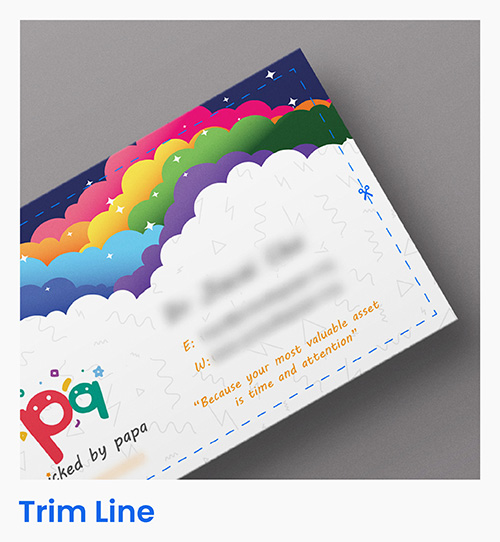
The trim line refers to the outermost edge of the card, where it will be cut during the printing and finishing process. It represents the business card’s final size and shape after being trimmed down from a larger sheet of paper.
When designing a business card, it’s important to include a trim line to indicate where the card will be cut. The trim line guides the printer, ensuring that the design elements, text, and images are correctly aligned and positioned within the desired dimensions of the finished card.
Bleed area:
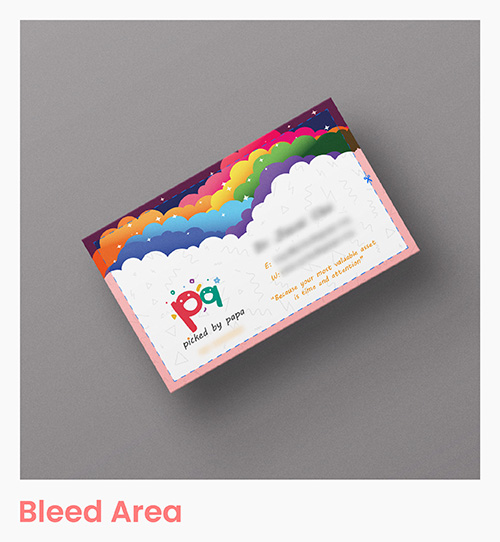
The bleed area refers to the extra space around the outer edges of the card that extends beyond the trim line. It ensures that when the business cards are printed and trimmed, there are no white borders or gaps along the edges, and the design extends to the edge.
When designing a business card, it’s essential to include a bleed area for slight variations during the printing and trimming. The bleed area is typically around 3 mm to 6 mm beyond the trim line on all sides.
Including a bleed area guarantees that if there are any minor shifts or discrepancies during the cutting process, the design elements and background colours will extend into this extra space, preventing any unwanted white borders or gaps from appearing on the final printed cards.
Safety Line:
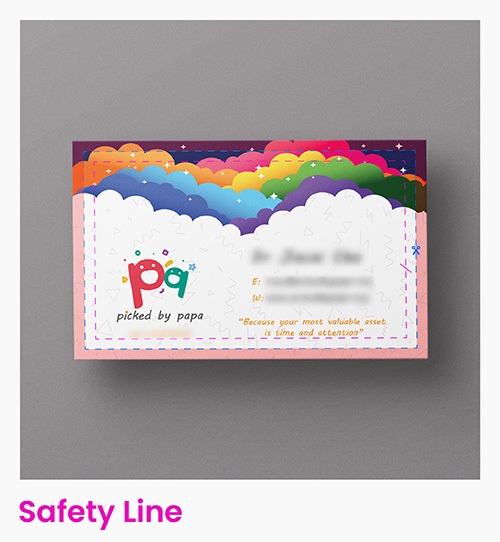
The safety line, also known as the safe zone or the inner margin, refers to an area within the dimensions of the business card that ensures essential text, logos, and design elements are safely positioned and will not be trimmed off during the printing and finishing process.
The purpose of the safety line is to provide a buffer zone inside the trim line where critical information or design elements should be placed. It helps prevent the risk of essential content being cut too close to the edge and potentially getting trimmed off, resulting in an undesirable final printed card.
The recommended distance for the safety line is typically around 3 mm inside the trim line on all sides. Any vital information or elements you want to ensure are prominent and intact on the printed card should be positioned within this inner margin.
By keeping important content within the safety line, you ensure that even if there are slight shifts during the printing and trimming process, the crucial parts of your business card design will remain safe and won’t be at risk of being cut off.
When designing your business card, it’s important to consider the safety line, bleed area, and trim line to ensure that your design is well-positioned and will result in a professional-looking final product. Keeping essential elements within the safety line guarantees they will be visible and won’t be compromised during finishing.
Maximizing Impact with Creative Designs
Creativity can elevate your business card from ordinary to extraordinary. Explore unique shapes, die-cutting techniques, and innovative materials to create a card that not only showcases your information but also captures attention and sparks conversation.
Technology’s Influence on Business Card Size
As technology evolves, so does the way we exchange contact information. Digital business cards, QR codes, and augmented reality are changing the landscape of networking. These technological advancements offer new possibilities for incorporating interactive elements into traditional business cards.
Business Card Size and Portability
The size of a business card directly impacts its portability. A compact business card can easily fit into wallets, pockets, and cardholders, making it readily accessible for networking events, conferences, and business meetings. A well-sized business card ensures that your contact information is always within reach.
The Future of Business Card Size
While digital transformation continues to reshape communication and networking, the physicality of business cards still holds value. The future of business card size may involve a harmonious integration of traditional and digital elements, creating a multi-dimensional networking tool that seamlessly connects the physical and digital worlds.
Custom Business Card Design vs Business Card Templates: Making the Right Choice for Your Brand
When creating a professional and memorable business card, you have two primary options: custom business card design or utilizing pre-made business card templates. Both approaches offer distinct advantages and considerations that can impact your brand’s image and effectiveness. In this article, we will delve into the differences between custom business card design and business card templates, helping you make an informed decision that aligns with your brand’s unique requirements.
A business card is a powerful networking tool and leaves a lasting impression on potential clients and contacts. When designing your business card, you must decide whether to opt for a custom design tailored specifically to your brand or utilize ready-made templates that offer convenience and efficiency. Let’s explore the pros and cons of each procedure to help you make a knowledgeable conclusion.
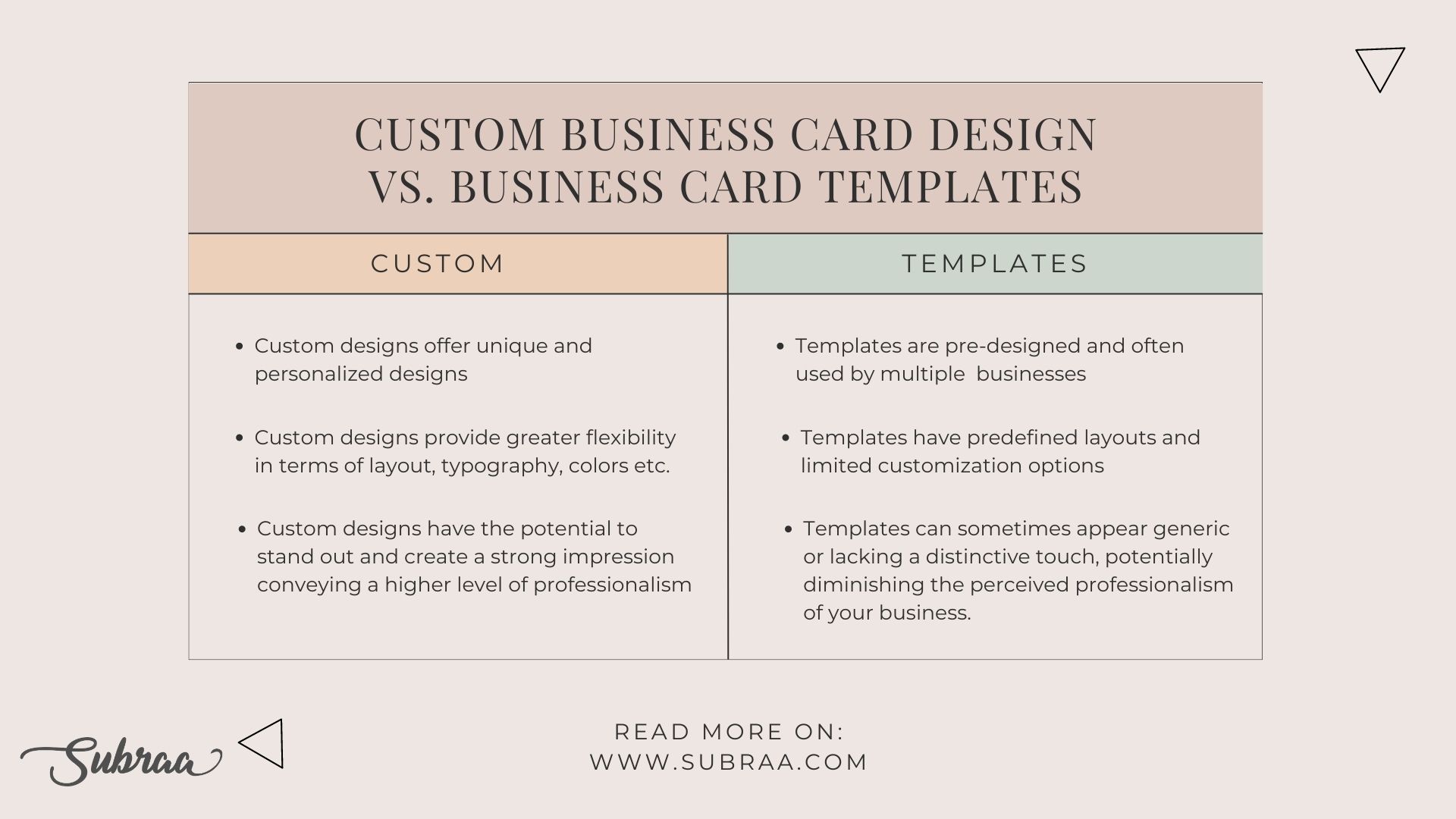
Custom Business Card Design
Custom business card design involves creating a unique and personalized card from scratch. This approach allows for complete creative freedom and ensures that your business card perfectly represents your brand’s identity.
Benefits of Custom Design
- Unique Branding: A custom-designed business card enables you to create a card that is entirely unique to your brand, standing out from the competition. It allows you to incorporate specific colors, typography, and design features that align with your brand identity.
- Tailored to Your Needs: Custom design caters to your particular requirements. Whether you need a card with unconventional dimensions, special finishes, or interactive features, a custom design can bring your vision to life.
- Flexible Design Elements: With a custom design, you have full control over every aspect of the card’s layout and content. You can highlight essential information, showcase your logo prominently, and experiment with different visual elements to create a card that resonates with your target audience.
Considerations for Custom Design
- Time and Cost: Custom design requires more time and investment than pre-made templates. You may need to hire a professional designer, allocate ample time for iterations, and consider printing costs for unique features or materials.
- Expertise Required: Creating a custom design requires design skills and an understanding of the printing process. If you lack these skills, collaborating with a professional designer can ensure the best results.
Business Card Templates
Business card templates offer ready-made designs that can be customized with your information. They provide a convenient and cost-effective solution for creating professional-looking business cards.
Advantages of Using Templates
- Ease and Efficiency: Templates provide a quick and easy solution for designing a business card. You can select from a wide range of pre-designed options, saving time and effort in the design process.
- Cost-Effective: Templates are often more budget-friendly than custom design since they eliminate the need for professional design services. They also simplify the printing process, as most templates are pre-formatted for standard printing sizes.
Factors to Consider with Templates
- Limited Customization: While templates offer convenience, they may have limitations regarding customization. You might have less flexibility in choosing specific colors, fonts, or design elements, which can impact how well the card aligns with your brand identity.
- Risk of Similar Designs: Since templates are widely accessible, there is a possibility that other businesses or professionals might be using the same or similar designs. This can dilute your brand’s uniqueness and make it harder for your card to stand out.
Making the Right Choice
Choosing between custom business card design and business card templates ultimately depends on your brand’s unique needs, budget, and timeline. Consider the following factors:
- Brand Identity: If your brand requires a highly customized and distinctive visual identity, custom design is likely the better choice. It allows for complete control over the design elements and ensures your card aligns perfectly with your brand.
- Budget and Timeline: Custom design often requires a higher investment of time and money. If you have budget constraints or need business cards quickly, templates can offer a cost-effective and efficient solution.
- Design Skills: Consider your own design skills and expertise. Suppose you are comfortable working with design software and have a good eye for aesthetics. In that case, custom design might be a viable option. Otherwise, using templates can help you achieve professional results without the need for extensive design knowledge.
Choosing between custom business card design and business card templates is a crucial decision that impacts your brand’s image and effectiveness. The custom design offers unparalleled flexibility and uniqueness but requires a greater investment of time and resources. On the other hand, templates provide convenience and cost-effectiveness but come with limitations on customization and uniqueness. Assess your brand’s needs, budget, and timeline to make an informed decision that creates a memorable and impactful business card. An effective business card design should capture attention, reflect your brand identity, and leave a memorable impression on potential clients or business partners.
Conclusion
In conclusion, business cards remain a powerful tool for networking and establishing professional connections. With their compact design and tangible presence, business cards offer a personal touch that sets them apart from virtual exchanges; having a well-designed business card can make a memorable impression on potential clients or collaborators.
To maximize the impact of your business card, consider incorporating the following elements: a clean and professional design, essential contact information, and a concise yet compelling tagline that showcases your unique value proposition. Remember, your business card should reflect your brand identity and leave a positive and lasting impression.
Take the next step towards professional success by investing in high-quality business cards representing your brand. Hand them out at networking events, conferences, and meetings to establish meaningful connections and create opportunities for collaboration. Don’t underestimate the power of this small yet mighty marketing tool.
So, what are you waiting for? Start designing your business cards today and make sure you’re ready to make a lasting impression on everyone you meet. Remember, it’s not just a piece of paper; it’s your ticket to success in the business world.
Frequently Asked Questions (FAQ)
What is on a business card?
A business card typically contains the following information:
Name, Title, Company/Organization, Contact Information, Logo, Design Elements, Additional Information: You can include any additional relevant information, such as your professional certifications, tagline, or a brief description of your services.
It’s important to note that the specific content on a business card can vary depending on the individual or company’s preferences and industry.
What is a business card and why is it important?
A business card is a small printed card that contains essential information about an individual or a business. It serves as a professional networking tool. Business cards are commonly used in various industries and professions to provide contact information and facilitate future communication.
Here are a few reasons why business cards are important:
1. Professionalism and Credibility
2. Networking and Contact Exchange
3. Branding and Brand Awareness
4. Memorability
5. Convenience and Accessibility
Do you really need a business card?
A business card remains a valuable networking tool. It provides a convenient and tangible way to exchange contact information, enhance professionalism, and leave a lasting impression. However, the necessity may vary depending on the industry and individual preferences.
What is the importance of business card design?
The design of a business card plays an important role in creating a lasting footmark on potential clients or partners. It represents your brand and acts as a powerful marketing tool.
What information should I include on my business card?
Essential information to include on a business card includes your name, job title, company name, contact details (phone number, email address, website), and any relevant social media handles.
What are some creative business card design ideas?
Experiment with unique shapes or materials, use eye-catching colors and textures, incorporate a memorable logo or tagline, and consider interactive or multi-functional elements that align with your brand identity.
Should I use a template or hire a professional business card designer?
It depends on your budget, design skills, and the desired level of customization. Templates can be a cost-effective option, but hiring a professional business card designer allows for a more tailored and unique business card design.
What are the current trends in business card design?
Some current trends include minimalistic designs, unconventional shapes, bold typography, textured finishes, and the use of sustainable or eco-friendly materials.
How can I ensure my business card design is consistent with my brand?
Use your brand’s color palette, fonts, and visual elements in the design. Maintain consistency with your website, logo, and other marketing collaterals to create a cohesive brand identity.
What are some common mistakes to avoid in business card design?
Avoid cluttered designs, illegible fonts, low-quality printing, outdated contact information, and neglecting to include essential details. Additionally, make sure your business card size is standard and fits in common cardholders.
How can I make my business card design stand out?
Incorporate unique design elements, such as spot UV finishes, embossing, or foiling. Consider adding a QR code for easy digital access to your website or portfolio. Make sure your card reflects your brand’s personality and values.
Should I include a QR code on my business card?
Including a QR code can provide a convenient way for recipients to access your website, portfolio, or social media profiles quickly. However, make sure the QR code is scannable and adds value to the overall design.
What is the difference between name card and business card?
In terms of practical usage, there is no significant difference between a name card and a business card—they serve the same purpose of exchanging contact information. However, the term “name card” is commonly used in some Asian countries, while “business card” is more prevalent in Western countries. The choice of terminology may vary based on regional preferences.



